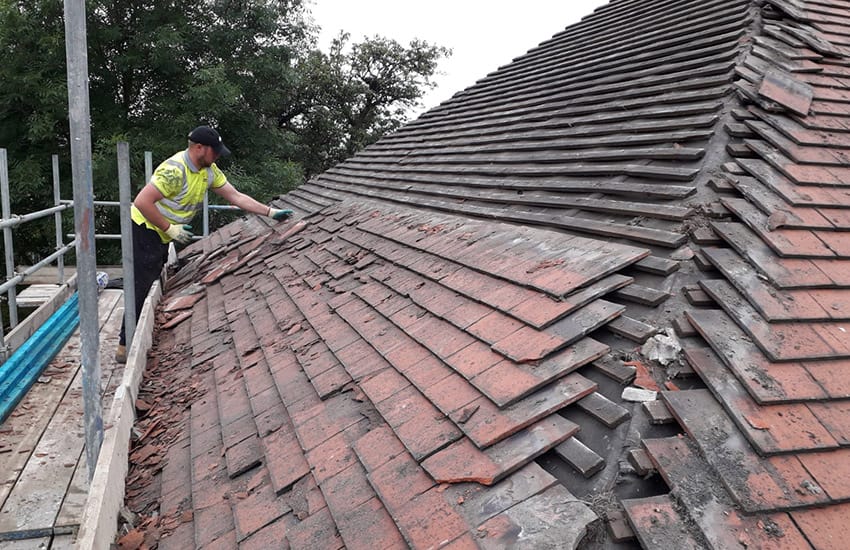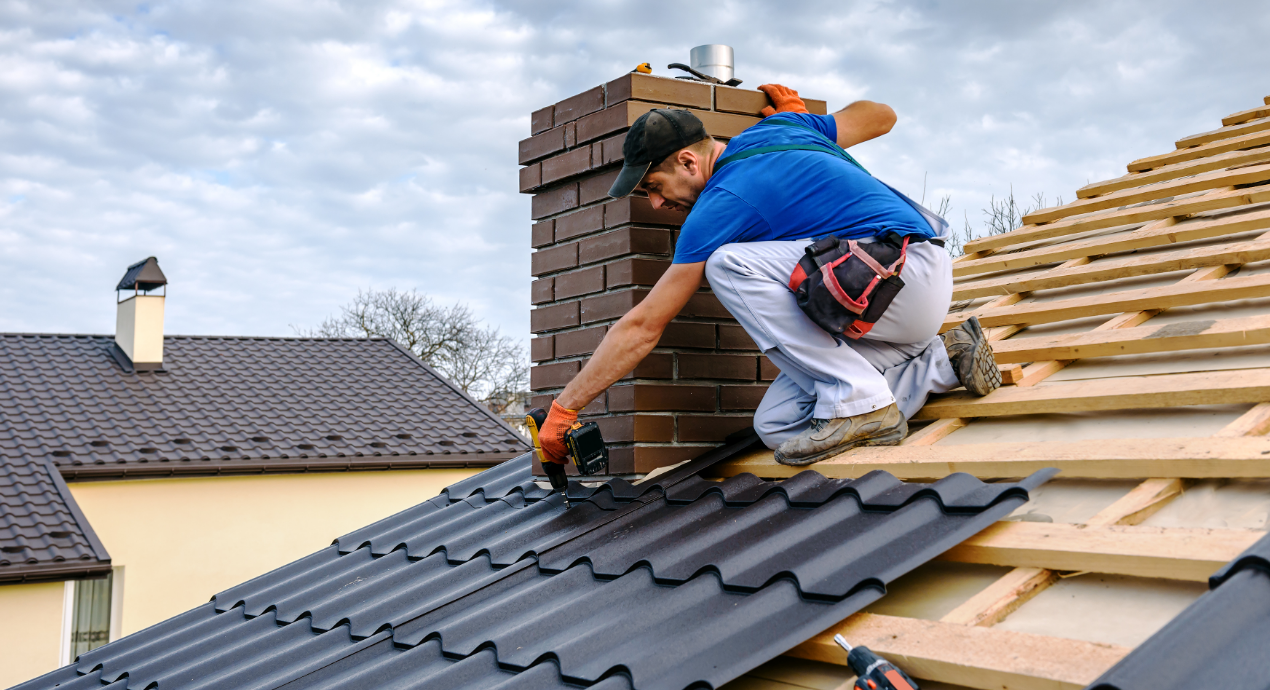Comprehending the Different Types of Roofs: A Comprehensive Guide for Homeowners
With a variety of alternatives-- varying from the standard gable to the modern level-- each kind presents distinct benefits and challenges that ought to line up with the property owner's environmental factors to consider and certain needs. As we check out the ins and outs of different roofing system kinds, it comes to be noticeable that one size does not fit all; the ideal choice might shock you.
Saddleback Roof
Gable roofs, defined by their triangular shape, are among one of the most popular roofing designs as a result of their simpleness and effectiveness in dropping water and snow. This design includes 2 sloping sides that satisfy at a ridge, permitting reliable water drainage and reducing the risk of water buildup. The steep pitch commonly connected with gable roofings boosts their ability to handle heavy precipitation, making them suitable for different climates.
Along with their sensible benefits, gable roof coverings use aesthetic convenience. They can be adapted to numerous building designs, from traditional to contemporary homes. The style can additionally fit extra functions such as dormer home windows, which enhance natural light and ventilation in the attic room area.
Additionally, saddleback roofs supply adequate room for insulation, adding to energy effectiveness. House owners can pick from a variety of roof products, including asphalt shingles, steel, and tiles, better enhancing customization options.
Despite their advantages, gable roofing systems may need extra support in areas vulnerable to high winds or hefty snowfall. On the whole, the saddleback roof continues to be a popular choice due to its blend of functionality, durability, and visual charm.
Apartment Roofs
Level roofs are frequently identified for their minimalist style and useful applications, particularly in commercial and industrial setups (oahu roofing). These roofs feature a horizontal or virtually horizontal surface area, which enables simple building and versatile area usage. While they may do not have the aesthetic allure of pitched roofs, level roofing systems offer countless benefits, specifically in metropolitan settings where optimizing area is crucial
One of the primary advantages of flat roof coverings is their availability. Homeowners can use the roofing system room for various objectives, such as rooftop gardens, balconies, or solar panel installments. Additionally, level roofings are normally more economical to install and preserve compared to their sloped equivalents, as they call for fewer materials and labor.
Usual products used for level roofs consist of built-up roof covering (BUR), customized bitumen, and single-ply membrane layers, each offering unique advantages. Overall, level roofs serve as a adaptable and functional choice for several homeowners and businesses alike.
Hip Roofs
Hip roof coverings are identified by their sloped sides that merge at the top, forming a ridge. This design stands out from gable roof coverings, as all 4 sides of a hip roofing system slope downwards toward the wall surfaces, giving a much more steady structure. The angle of the inclines can differ, enabling flexibility in architectural visual appeals and performance.
One of the key advantages of hip roofs is their capacity to withstand hefty winds and negative climate condition. The sloped surface areas make it possible for far better water drainage, minimizing the threat of leaks and water damage. In addition, hip roof coverings use enhanced attic room area, which can be utilized for storage space or also converted right into comfortable areas.
However, building a hip roofing system can be extra expensive and intricate than easier roof types, such as saddleback roofs. The added material and labor entailed in creating the slopes and making certain appropriate architectural stability can bring about higher expenses. In spite of these drawbacks, lots of homeowners favor hip roof coverings for their toughness, aesthetic appeal, and possibility for power performance.
Mansard Roofing Systems
Mansard roof coverings, frequently acknowledged by their one-of-a-kind four-sided design, feature 2 inclines on each side, with the lower slope being great post to read steeper than the upper. This building style, originating from France in the 17th century, is not just cosmetically appealing but practical, as it makes best use of the usable space in the upper floors of a structure. The steep reduced incline enables even more clearance, making it an excellent option for loft spaces or attic rooms, which can be exchanged living spaces.
Mansard roofing systems are defined by their adaptability, suiting different building styles, from standard to contemporary. They can be built with different materials, consisting of asphalt tiles, slate, or steel, supplying home owners with an array of alternatives to match their choices and spending plans. Additionally, the layout permits for the assimilation of dormer windows, improving natural light and ventilation in the top degrees.
Nonetheless, it is important to take into consideration the potential disadvantages. Mansard roofings may call for more upkeep as a result of the intricacy of their style, and their high slopes can be testing for snow and rainfall overflow. In general, mansard roofings combine elegance with usefulness, making them a prominent choice amongst house owners seeking distinctive building features.
Lost Roof Coverings
As house owners progressively seek simpleness and functionality in their architectural designs, lost roofings have become a popular option. Characterized by a single sloping aircraft, a shed roofing presents a minimal aesthetic that enhances different see this site home designs, from contemporary to rustic.
Among the primary advantages of a shed roof covering is its straightforward construction, which typically converts to lower labor and product prices. This design permits reliable water drain, decreasing the threat of leakages and water damages. Furthermore, the vertical incline gives sufficient space for skylights, boosting natural light within the interior.
Dropped roofings additionally use flexibility in terms of usage. They can be successfully incorporated right into additions, garages, or exterior frameworks like pavilions and sheds. Additionally, this roofing style can fit different roof products, consisting of steel, asphalt roof shingles, or also environment-friendly roofs, straightening with green campaigns.
However, it is necessary to think about regional climate conditions, as hefty snow tons might require adjustments to the roofing system's angle or structure. Overall, shed roofs present a sensible and cosmetically pleasing alternative for sites home owners looking to optimize performance without jeopardizing style.
Verdict


Gable roofing systems, defined by their triangular form, are amongst the most prominent roof styles due to their simpleness and performance in dropping water and snow. oahu roofing. The high pitch commonly linked with gable roofings improves their ability to handle hefty rainfall, making them ideal for various climates
While they may do not have the visual charm of pitched roofing systems, flat roofings supply countless benefits, specifically in city environments where making the most of area is vital.
